Decade in review: In 2016 Pokémon Go created a phenomenon that lasts to this day

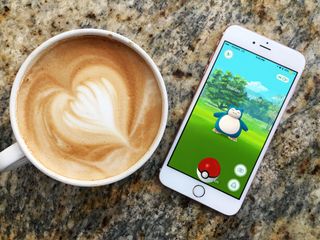
Pokémon Go isn't an Apple product (it's from the Pokémon Company and Niantic), nor was it exclusive to the iOS platform. However, there is no denying the cultural phenomenon that is Pokémon Go, and that's why it is the most significant app to embrace Apple iPhones, iPads, and iPods during 2016, and it's still going strong.
I grew up with Pokémon as a kid, and it remained a hobby even as I was going through high school. I watched the anime, collected the trading cards (but didn't actually play the game), and I eventually played the video games. To be honest, my first Pokémon game was SoulSilver, and I've played most of the Pokémon games since then.
But ever since I had my iPhone 3G and Apple launched the App Store, I was always wondering if one day we would see Pokémon or some other Nintendo property available as a mobile game. Pokémon Go launched in 2016, and it was literally life-changing for me, and many others.
Setting the bar for augmented reality
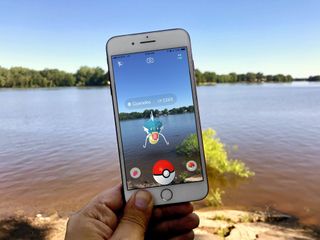
Pokémon Go launched on July 6, 2016, but this date has more meaning to me than most — it's literally the day I met my now-husband and the start of many Pokémon adventures for us.
When Pokémon Go first launched, there was literally nothing like its kind on the App Store. Sure, some smaller developers published some augmented reality (AR) style games, and Niantic even had a moderately successful run with its Ingress AR game, but none of them really took off because they didn't have a big-name intellectual property behind them. But when people heard that a Pokémon AR game would be coming, where you can discover and catch the infamous pocket monsters from the real world right on your phone, people got excited. I know I was hyped. This was the first AR game that took off like no other — it became a global phenomenon that has yet to be repeated.
As a kid, I've always wanted Pokémon to be "real." The idea of being able to "see" Pokémon in the real world was exciting enough for me, but to also be able to catch them for my own personal collection of Pokémon? I mean, sign me up! It was a dream come true for my inner child.
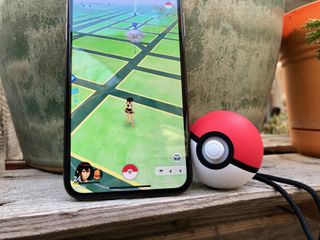
When Pokémon Go first launched, players could create a basic Pokémon Trainer character, select a Starter Pokémon, and then begin their adventure. Professor Willow gives you some Poké Balls, and you can start catching wild Pokémon you encounter by keeping your game open and going about your daily business.
Master your iPhone in minutes
iMore offers spot-on advice and guidance from our team of experts, with decades of Apple device experience to lean on. Learn more with iMore!
There were also three teams that you could be on, igniting a sense of rivalry with other teams and camaraderie with fellow teammates when it came to taking over Pokémon Gyms. The Gym system (and a lot of other game mechanics) has changed a lot since the original version, but Pokémon Go still retains the same values of community and working together, despite being on different teams.
The global phenomenon of Pokémon Go
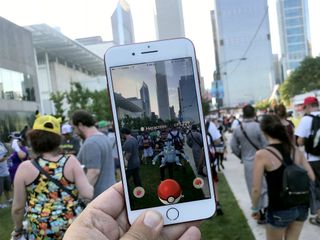
When the game first launched, it had the effect of getting people out of their house to play, while also forming friendly, tight-knit communities of Pokémon Trainers. And it didn't matter whether you were a veteran Pokémon fan or a complete newbie — people were out in droves everywhere to simply play some Pokémon.
I remember going on many more visits and walks around parks, beaches and piers, and other densely populated areas. There would always be hordes of people, all split up into their own smaller groups, wandering around and doing laps with their heads pointed down at the glowing screen of a smartphone.
And when a rare Pokémon spawn showed up? Oh boy, you wouldn't believe the madness that would ensue. I remember playing at The Pike in Long Beach, California, and when a Lapras spawned, a huge mob of people (myself included) sprinted across a bridge to make sure that they could get the Lapras to show up on their phone, and then attempt to catch it. You would hear many yells of "YES!" once Lapras remained in the Poké Ball, or cries of agony when Lapras fled after one attempt.
There would even be people creating Pokémon scanners that let you know when there was a rare Pokémon in the area. People would then drive to get these Pokémon, and you'd see a bunch of cars parked illegally or stopped in the road as everyone tried to catch a Dragonite, or something similar.
That was just my first-hand experience of the crazy Pokémon mobs. But I remember seeing other similar events in the news, where a huge mob would be seen running frantically in public spaces, trying to make it to a rare Pokémon spawn in time before it disappears.
Regardless of how you saw these mobs of Pokémon Trainers trying to catch the powerful and rare spawns, there's no doubt about it — Pokémon Go definitely is a cultural phenomenon that has yet to be repeated.
Building a sense of community through technology
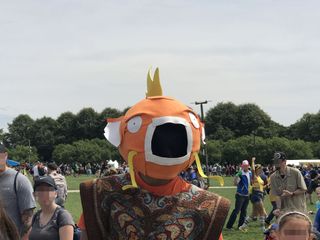
The most significant effect that Pokémon Go has had is that it has helped build lasting friendships, relationships, and a strong sense of community among the player base. You can find a few of these kinds of stories on the Pokémon Go subreddit, and they're definitely inspiring.
As I mentioned earlier, the Pokémon Go launch date of July 6, 2016, is also significant to me because that's when I met the person that would become my husband. Although due to some stupid mistakes on my part, I kind of ghosted him to go back to my ex then, who I went on some Pokémon adventures with for a few weeks after — mostly at The Pike in Long Beach, California and the city of Monterey Park. Eventually, things didn't work out, and I went back to my now-husband.
With Pokémon Go, it was one of the activities that we loved doing together, and we would take long walks with our husky in various parks and just play Pokémon Go. It was one of our favorite activities to do, even if we were a bit competitive due to being on different teams — I am Instinct, and he's Valor.
We would also stumble upon other groups of Pokémon Go players, and just talk about Pokémon and what we've caught or seen so far in the area that day. From my experience, other Pokémon Go players are usually friendly, and would be willing to help out other players with something if needed, like gyms or raids (though this was added later).
And while I haven't seen it in person in my area yet, there are tales of some players who end up bringing fun, Pokémon-themed treats to share with others during events like Community Day. It's amazing to think that this little AR game that came out in 2016 has brought so many people together over their love of Pokémon.
Other significant Apple gadgets in 2016
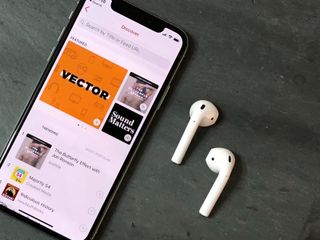
Apple introduced the first-generation of AirPods in 2016, which also has a bit of an impact, though not as much as Pokémon Go, at least in my eyes.
AirPods were still a big deal because they eliminated the hassles of wireless headphones and were insanely easy to set up and use. Plus, you got five hours of listening time with these babies, and up to another 24 hours worth of charge with the carrying case.

The AirPods also introduced Apple's proprietary W1 chip to the world, which allows for quick pairing and auto-connecting with Apple devices. The W1 chip also has the advantage of improved power efficiency. However, AirPods still work over Bluetooth, so you could technically use them with non-Apple devices too, but with the caveat of no Siri.
After the AirPods, you can find many AirPod-like wireless earbuds on the market today, so it has left a dent on the market like the iPhone. And you can find people with AirPods in their ears out in public, as it is convenient and also seen as a "status" symbol.
But there's just something about the massive popularity of Pokémon Go that had such an impact around the world that it's still a cultural phenomenon today.
More navigation links:

Apple
- Apple across the decade
- Rene Ritchie's product of the decade
- The iPad
- iPhone 4s
- Qi charging
- iPhone 5c
- iOS 8
- Apple Watch
- Pokémon Go
- Nintendo Switch
- iPad Pro
- iPhone 11 Pro
- Nintendo
- Top Google stories of the decade
- Google Home & Google Assistant
- Moto X
- Roku
- Chromecast & Google Cast
- HDR+
- Samsung Galaxy S7
- Alexa & Amazon Echo
- HTC One M7
- Robot Vacuums
- Google Cardboard
- Google Wifi
Microsoft
Christine Romero-Chan was formerly a Senior Editor for iMore. She has been writing about technology, specifically Apple, for over a decade at a variety of websites. She is currently part of the Digital Trends team, and has been using Apple’s smartphone since the original iPhone back in 2007. While her main speciality is the iPhone, she also covers Apple Watch, iPad, and Mac when needed.
When she isn’t writing about Apple, Christine can often be found at Disneyland in Anaheim, California, as she is a passholder and obsessed with all things Disney, especially Star Wars. Christine also enjoys coffee, food, photography, mechanical keyboards, and spending as much time with her new daughter as possible.
Most Popular






